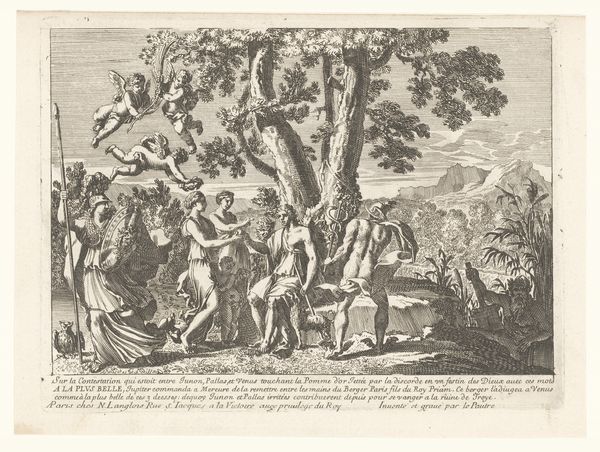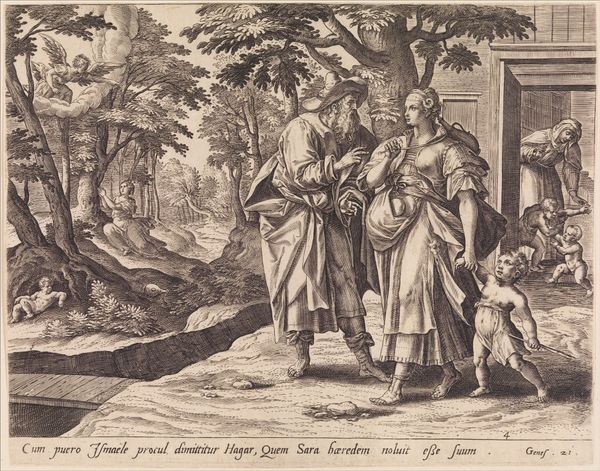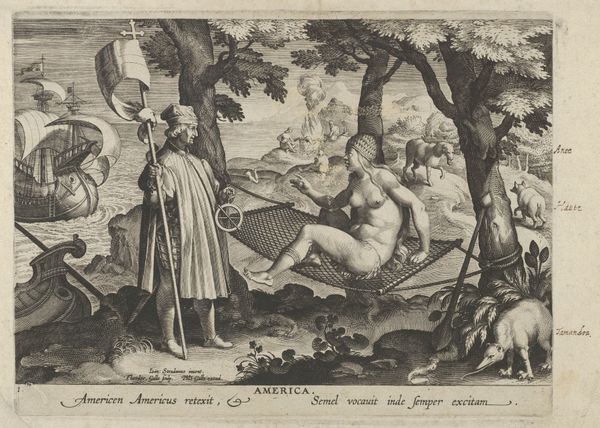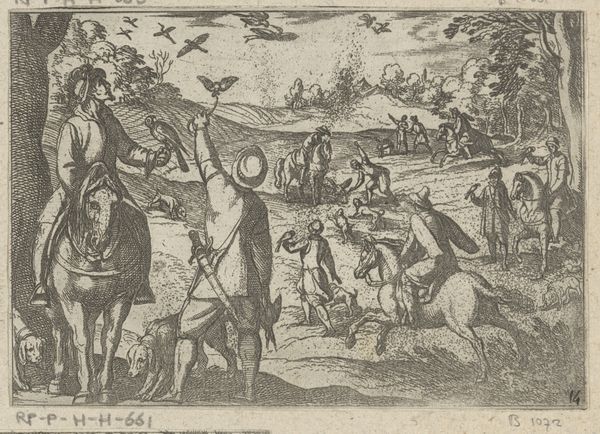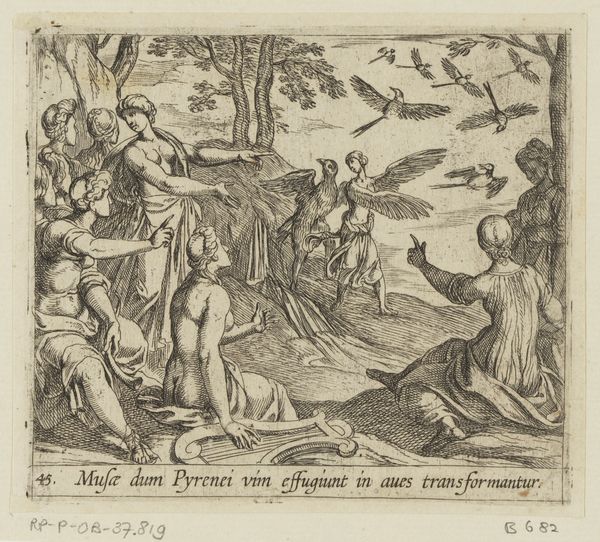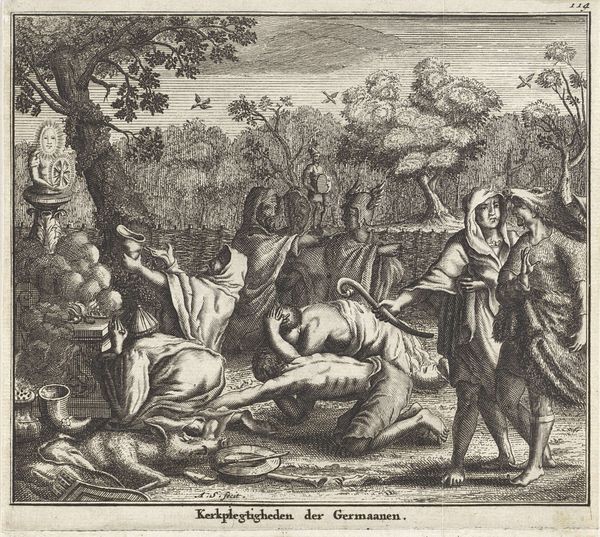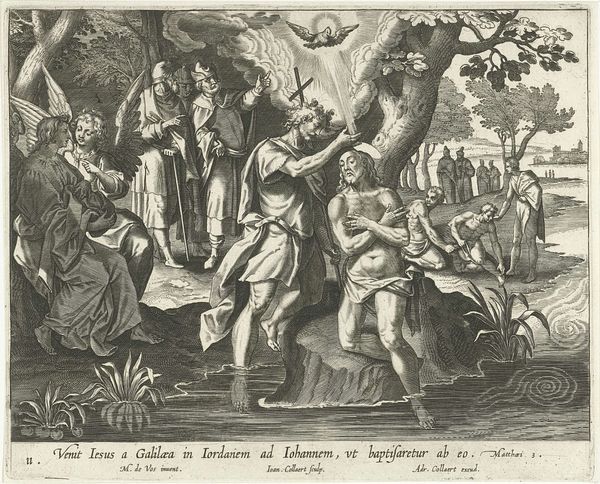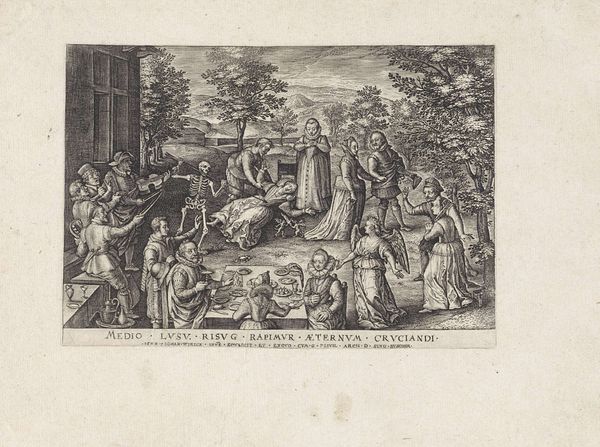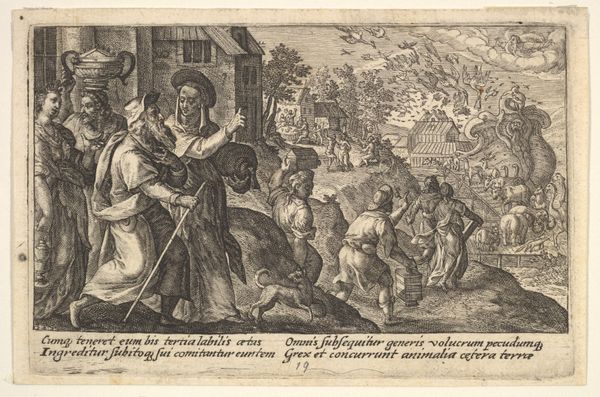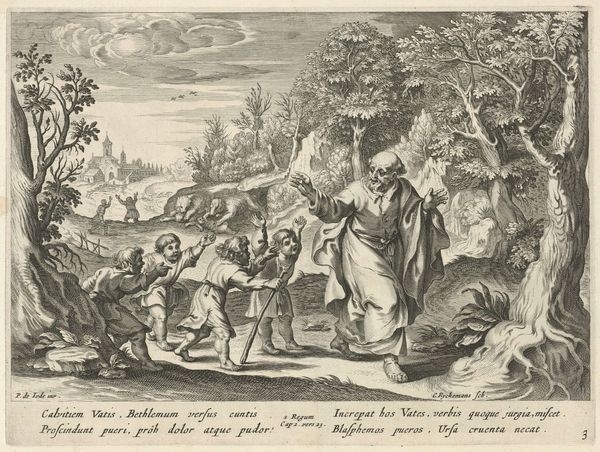
Plate 139: The Apulian Shepherd Changed into an Olive Tree (Apulus pastor in oleastrum transit), from Ovid's 'Metamorphoses' 1606
0:00
0:00
drawing, print, etching, engraving
#
drawing
#
allegory
# print
#
etching
#
mannerism
#
history-painting
#
engraving
Dimensions: Sheet: 4 1/8 × 4 1/2 in. (10.5 × 11.5 cm)
Copyright: Public Domain
Curator: This etching by Antonio Tempesta, dating back to 1606, illustrates a scene from Ovid's 'Metamorphoses,' titled 'Plate 139: The Apulian Shepherd Changed into an Olive Tree.' The Met is its current home. What strikes you most upon seeing it? Editor: It feels otherworldly and ominous, despite the pastoral setting. The sharp contrast and detailed lines heighten the sense of dramatic transformation. The figures seem frozen in a moment of suspended animation. Curator: Tempesta, deeply rooted in the Mannerist style, brings a palpable tension to Ovid’s narratives. Transformation isn't merely a visual trick but also involves socio-political disruption. We must question: what systemic imbalance demands such radical shifts in identity? How does the narrative endorse or critique those power structures? Editor: Visually, I am interested by the Olive tree emerging from the shepherd’s body. Olive trees are symbols of peace, hope, and prosperity. What does it signify to have such sacred symbolism emerge from what looks to be a scene of punishment or transformation? The women in a circle appear to perform a ritual or are acting as silent witnesses. Are they a connection to the old traditions and belief? Curator: Consider Apulia, now Puglia in Southern Italy—historically a landscape of migration, trade, and invasion. The transformation narrative echoes broader issues of land rights, cultural assimilation, and resistance to Roman authority. The Shepherd may symbolize regional identity, unwillingly morphed by external domination. The ring of women may signify those who remember him before colonization. Editor: These repeated symbolic gestures point back to the culture of collective memory and visual vocabulary. Even now, the symbolic weight is clear even outside its context, and that speaks volumes. The etching's success lies in harnessing visual language, inviting cross-generational reflection. Curator: It reframes how we look at transformation: not as singular moments of personal change, but as symptomatic of wider power imbalances and cultural clashes. This pushes the boundaries of Ovid's tale. Editor: A rich and complex rendering that extends beyond pure aesthetics and storytelling. I leave appreciating its enduring layers. Curator: Indeed. These engravings reveal much about how narratives shape perceptions of place and people, forcing us to confront difficult realities about historical and ongoing transformations.
Comments
No comments
Be the first to comment and join the conversation on the ultimate creative platform.

